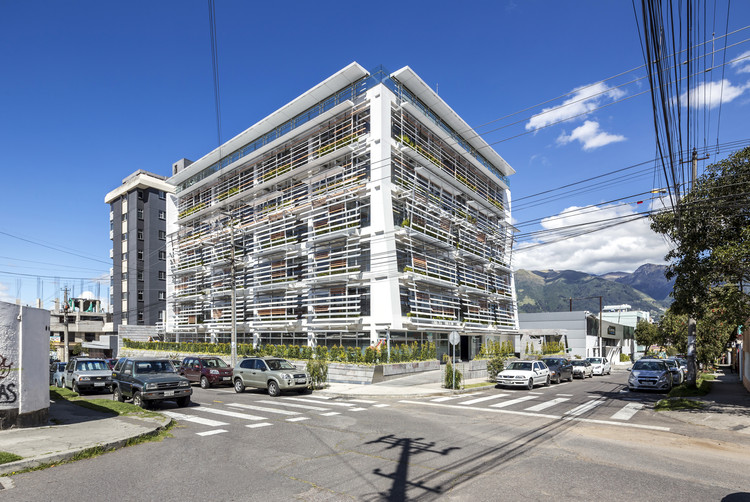
-
Architects: Estudio A0
- Area: 3000 m²
- Year: 2014
-
Photographs:Jean-Claude Constant
-
Manufacturers: ITVAL

Text description provided by the architects. The Quito Publishing House is located in La Floresta neighborhood: a bohemian, artsy and closely knit community in the heart of Northern Quito. Its idiosyncratic nature posed the greatest design challenge. We were asked to introduce an office building where few exist and in the midst of a community with a strong sense of civil awareness, adamant about preserving the spatial values of its neighborhood. The program we were assigned was exciting: three publishing companies, formerly housed in separate floors of a high-rise, wanted to share one large space. Their employees are creative individuals with a strong aesthetic sensibility. This tripartite ownership of the building gave us more flexibility in terms of how we could program and distribute the space; all companies could relate within a similar hierarchal level. All three revolve around a central void, share the privilege of the same views, and have access to a roof garden. They also share communal spaces and we expect the fluid arrangement of the plan and section to catalyze a community atmosphere analogous to the one that characterizes the neighborhood.

































